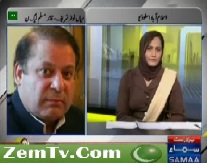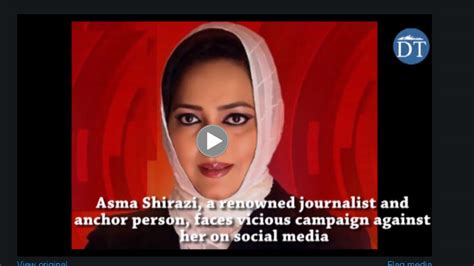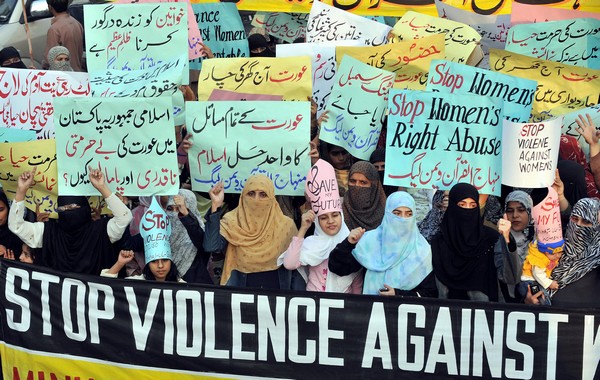Women Journalists of Pakistan: Resilient to Challenges
We asked members to communicate about a crucial issue in their region and what women in media can do. Qudsia Mahtab Mehmood from Islamabad, Pakistan writes the recent elections held in Pakistan on 25 July, 2018 brought many challenges for women journalists attempting to report fairly about the elections.
 Many journalist’s programs were banned before and after the elections. One such example is Asma Shirazi (a well-known senior TV anchor) whose program which contained an interview with a former Prime Minister of Pakistan Mr. Nawaz Sharif, was banned.
Many journalist’s programs were banned before and after the elections. One such example is Asma Shirazi (a well-known senior TV anchor) whose program which contained an interview with a former Prime Minister of Pakistan Mr. Nawaz Sharif, was banned.
Asma tweeted that she had recorded an exclusive interview with Sharif but her program was not allowed to be broadcast. Shirazi travelled with him and his daughter Maryam Nawaz from London to Pakistan. (Both father and daughter were recently jailed for 11 and 8 years respectively by the accountability court in Islamabad, but have since been released by the high court)
Even though the interview was not broadcast, Shirazi had to face online harassment and harsh trolling. She was targeted by followers of a rival political faction, Pakistan Tehreek e Insaf and also state actors online. She was called a “whore”, a “slut”, a “traitor” and a “western agent”. She faced the comments bravely and even responded to some of them, receiving widespread support not only from female colleagues but from male journalists too. But this all has put a question mark on the safety and security of female journalists in Pakistan.
 This intolerance of female journalists is not only in society but in their workplace, too. Female Journalists are less than five percent of the total population in the media industry and they commonly face harassment in the workplace. According to a survey conducted in Khyber Pukhtoonkhuwa and Punjab provinces, every second female journalist has faced gender-based violence. The other major issue is inadequate maternity leave, some received a month’s leave. Others had it even worse, no leave and many employer’s policies are not women friendly. Low wages and a failure to provide transport to reporting jobs by the employers is another gender discrimination. Women are mostly not encouraged into the media industry by society at large.
This intolerance of female journalists is not only in society but in their workplace, too. Female Journalists are less than five percent of the total population in the media industry and they commonly face harassment in the workplace. According to a survey conducted in Khyber Pukhtoonkhuwa and Punjab provinces, every second female journalist has faced gender-based violence. The other major issue is inadequate maternity leave, some received a month’s leave. Others had it even worse, no leave and many employer’s policies are not women friendly. Low wages and a failure to provide transport to reporting jobs by the employers is another gender discrimination. Women are mostly not encouraged into the media industry by society at large.
These burning issues are a hindrance
While talking to some journalism students I came to know that they are looking for careers in the social sector field instead of the media. They said media work was not good for women and above all, they believed they would receive a lot of sexual harassment in the field. This is the general perception which prevails in the society.
Laws against harassment in the workplace law are available and applicable. Federal and Provincial ombudspersons are there to help. But very few women journalists report it.
The ultimate threat is character assassination by colleagues and the perpetrator of online trolling. Examples are available from the last year when some Pakistan Television (state controlled PTV) employees filed a complaint of sexual harassment against their director, they had to face negative consequences in the workplace and also from society at large. Eventually the matter was resolved in the federal ombudsperson court. But the process of getting justice was not easy; they had to suffer a lot before they were reinstated in their respective positions.
We need to work and sensitize the media owners and policy makers so that they can make gender friendly policies and ensure their implementation. Threats and challenges are there and they will be present in one form or another, but we need to equip our female journalists with the skills to handle the harassment and to utilize the existing women friendly laws.
Role of IAWRT
There is dire need of a platform which not only sensitized but can build the capacity of emerging female journalists and help solve their issues with their employers.
Most of the campaigns running or groups formed are primarily focused on the journalist working in the field but the people who are associated with policy making and decision making are mostly neglected. The bias against women within the media industry is a major concern. IAWRT can play a role by its presence in Pakistan and working on the sensitization of media employers and female journalists. especially in small cities where women have very limited space.
Women journalists need to have a choice of beats and a conducive environment. Pro women laws sensitization in media is another issue. Digital security workshops and professional training can equip female journalists to meet the challenges.
Pic ‘women protesting in Pakistan’ from Wonderlist








